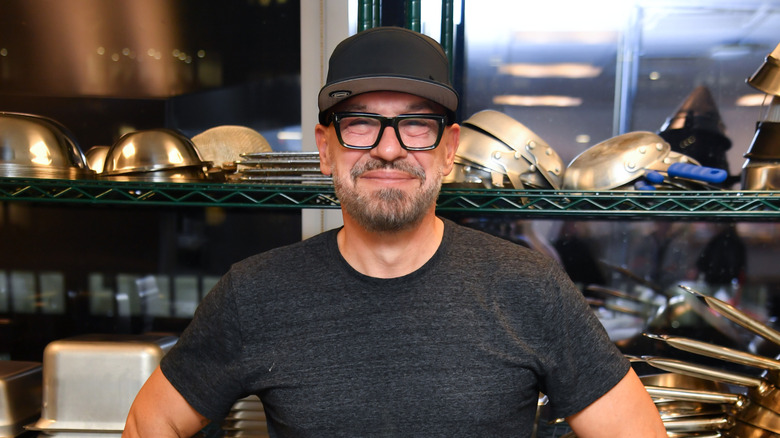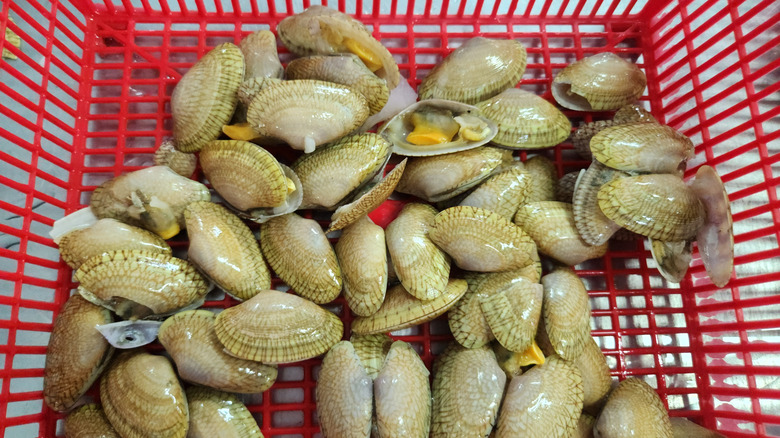The Telltale Sign You Should Throw Out Clams, According To Michael Symon
Celebrity chef Michael Symon is known for breaking down kitchen wisdom into simple, memorable advice, and when it comes to seafood, he doesn't mince words. His rule about clams is straightforward; if a clam doesn't close when tapped, it should go straight into the discard pile, he shared on Food Network's Facebook page. The rule isn't in place as a matter of preference or because you're picky — it's a matter of safety. Before you ever reach the purging process, you have to make sure the clams are suitable for consumption in the first place.
Clams, like mussels and oysters, are sold alive, and their shells serve as protective armor. A clam that's alive and healthy will instinctively clamp shut when disturbed, signaling that it's still safe to cook and eat. If the shell stays gaping open, that clam is already dead, and consuming it can increase the risk of foodborne illness.
This simple tap test is one of the oldest checks in seafood preparation, and it doesn't require any culinary training or special equipment beyond your hands and eyes. It's especially important because clams are filter feeders, drawing in water and any particles suspended in it. Once they die, they begin to deteriorate quickly, and their bodies can harbor bacteria that multiply in unsafe ways. Symon's advice cuts through the confusion in that he doesn't advise anyone to gamble on smell, appearance, or wishful thinking because you don't want to waste your money. It may seem wasteful to throw out a few clams, but the alternative — a ruined meal or worse, a trip to the doctor — makes following this rule non-negotiable.
How to handle clams safely beyond the tap test
Knowing when to throw clams out is only part of the equation; handling them correctly after you pick them and bring them home ensures the ones that pass the test stay delicious. Beginning with storage, clams should be kept cool, ideally in a breathable bag or loosely covered container in the refrigerator. Try not to seal them in airtight bags because they need oxygen to survive until cooking. If stored properly, they can last for a couple of days, but the fresher they are, the better the final dish will taste.
Before cooking, soak the clams in cold, salted water for about twenty minutes. This process encourages them to purge sand or grit from inside their shells, allowing you to get a cleaner, more enjoyable bite. Once they hit the heat, look for the opposite reaction of Chef Symon's rule, as the clams should open fully as they cook. Any that remain stubbornly closed after steaming or grilling should also be discarded.
Finally, remember that fresh clams should carry a clean, briny aroma reminiscent of the ocean, not a fishy or sour smell. Combine those cues with Symon's tap test, and you'll have a foolproof method for enjoying clams at their best.


